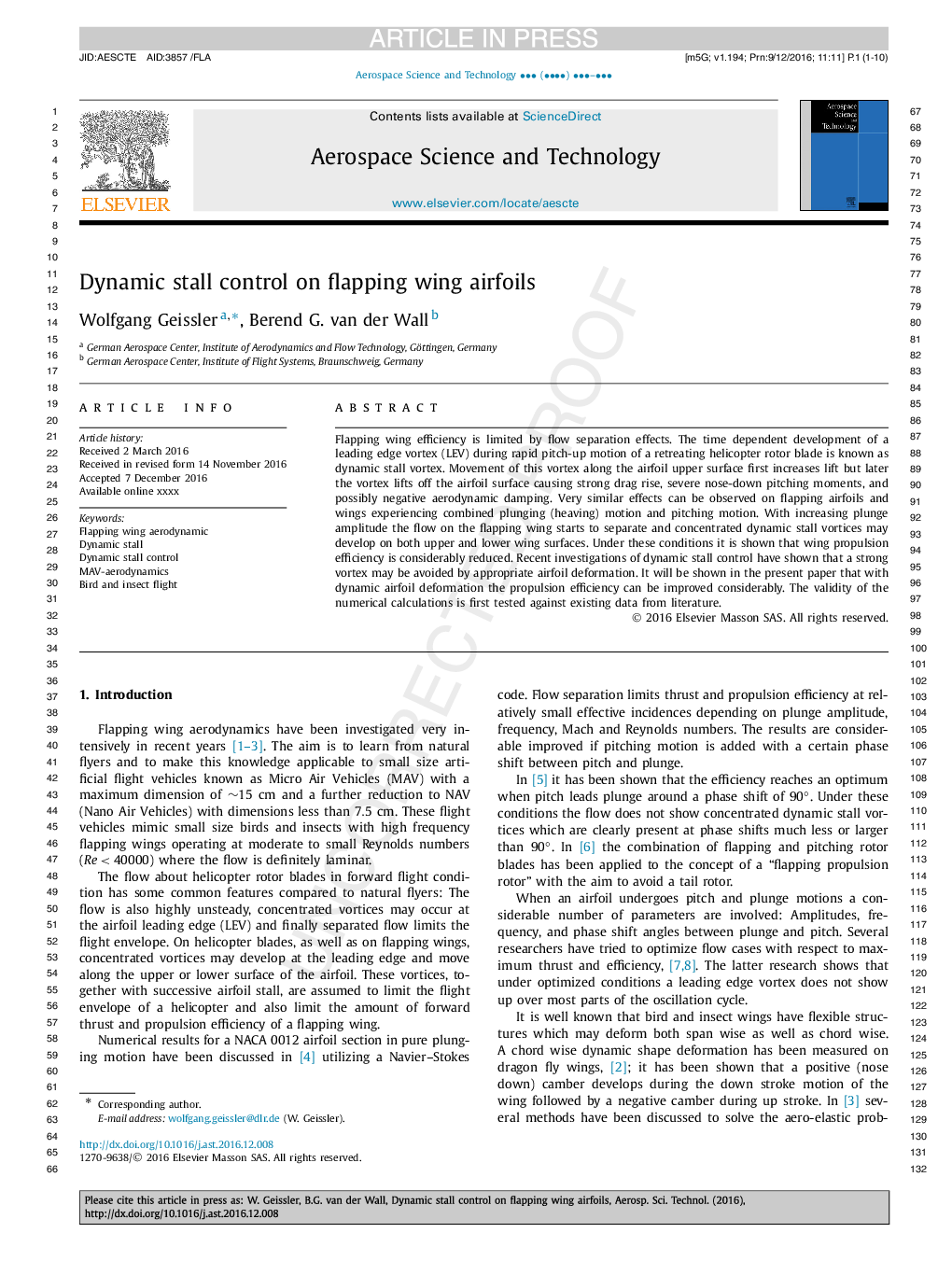| Article ID | Journal | Published Year | Pages | File Type |
|---|---|---|---|---|
| 5472830 | Aerospace Science and Technology | 2017 | 10 Pages |
Abstract
Flapping wing efficiency is limited by flow separation effects. The time dependent development of a leading edge vortex (LEV) during rapid pitch-up motion of a retreating helicopter rotor blade is known as dynamic stall vortex. Movement of this vortex along the airfoil upper surface first increases lift but later the vortex lifts off the airfoil surface causing strong drag rise, severe nose-down pitching moments, and possibly negative aerodynamic damping. Very similar effects can be observed on flapping airfoils and wings experiencing combined plunging (heaving) motion and pitching motion. With increasing plunge amplitude the flow on the flapping wing starts to separate and concentrated dynamic stall vortices may develop on both upper and lower wing surfaces. Under these conditions it is shown that wing propulsion efficiency is considerably reduced. Recent investigations of dynamic stall control have shown that a strong vortex may be avoided by appropriate airfoil deformation. It will be shown in the present paper that with dynamic airfoil deformation the propulsion efficiency can be improved considerably. The validity of the numerical calculations is first tested against existing data from literature.
Keywords
Related Topics
Physical Sciences and Engineering
Engineering
Aerospace Engineering
Authors
Wolfgang Geissler, Berend G. van der Wall,
